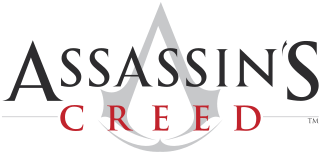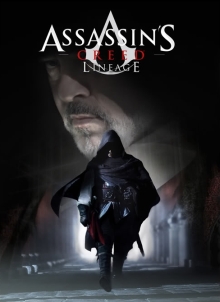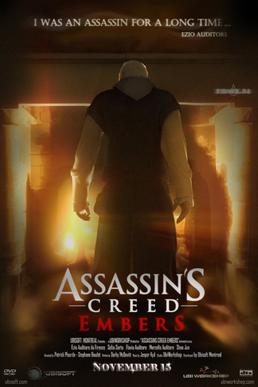
Francesco Landini was an Italian composer, poet, organist, singer and instrument maker who was a central figure of the Trecento style in late Medieval music. One of the most revered composers of the second half of the 14th century, he was by far the most famous composer in Italy.

The Squarcialupi Codex is an illuminated manuscript compiled in Florence in the early 15th century. It is the single largest primary source of music of the 14th-century Italian Trecento.
Lorenzo Masi, known as Lorenzo da Firenze, was an Italian composer and music teacher of the Trecento. He was closely associated with Francesco Landini in Florence, and was one of the composers of the period known as the Italian ars nova.
Paolo da Firenze was an Italian composer and music theorist of the late 14th and early 15th centuries, the transition from the musical Medieval era to the Renaissance. More surviving music of the Trecento is attributable to Paolo than to any other composer except for Francesco Landini.

Donato da Cascia was an Italian composer of the Trecento. All of his surviving music is secular, and the largest single source is the Squarcialupi Codex. He was probably also a priest, and the picture that survives of him in the Squarcialupi Codex shows him in the robes of the Benedictine order.

Leonardo da Vinci was an Italian Renaissance painter and polymath who achieved legendary fame and iconic status within his own lifetime. His renown primarily rests upon his brilliant achievements as a painter, the Mona Lisa and The Last Supper, being two of the most famous artworks ever created, but also upon his diverse skills as a scientist and inventor. He became so highly valued during his lifetime that the King of France bore him home like a trophy of war, supported him in his old age and, according to legend, cradled his head as he died.

The Trecento was a period of vigorous activity in Italy in the arts, including painting, architecture, literature, and music. The music of the Trecento paralleled the achievements in the other arts in many ways, for example, in pioneering new forms of expression, especially in secular song in the vernacular language, Italian. In these regards, the music of the Trecento may seem more to be a Renaissance phenomenon; however, the predominant musical language was more closely related to that of the late Middle Ages, and musicologists generally classify the Trecento as the end of the medieval era. Trecento means "three hundred" in Italian but is usually used to refer to the 1300s. However, the greatest flowering of music in the Trecento happened late in the century, and the period is usually extended to include music up to around 1420.
Gherardello da Firenze was an Italian composer of the Trecento. He was one of the first composers of the period sometimes known as the Italian ars nova.
Ezio is an Italian masculine name, originating from the Latin name Aetius.

Assassin's Creed II is a 2009 action-adventure video game developed by Ubisoft Montréal and published by Ubisoft. It is the second major installment in the Assassin's Creed series, and the sequel to 2007's Assassin's Creed. The game was first released on the PlayStation 3 and Xbox 360 in November 2009, and was later made available on Microsoft Windows in March 2010 and OS X in October 2010.

Assassin's Creed is a historical action-adventure video game series and media franchise published by Ubisoft and developed mainly by its studio Ubisoft Montreal using the game engine Anvil and its more advanced derivatives. Created by Patrice Désilets, Jade Raymond, and Corey May, the Assassin's Creed video game series depicts a fictional millennia-old struggle between the Order of Assassins, who fight for peace and free will, and the Knights Templar, who desire peace through order and control. The series features historical fiction, science fiction, and fictional characters intertwined with real-world historical events and historical figures. In most games, players control a historical Assassin while also playing as an Assassin Initiate or someone caught in the Assassin–Templar conflict in the present-day framing story. Considered a spiritual successor to the Prince of Persia series, Assassin's Creed took inspiration from the novel Alamut by the Slovenian writer Vladimir Bartol, based on the historical Hashashin sect of the medieval Middle East.

Assassin's Creed II: Discovery is a 2009 action-adventure side-scrolling video game developed by Griptonite Games and published by Ubisoft. It was released for the Nintendo DS in November 2009, and for the iOS operating system in January 2010. Part of the Assassin's Creed series, it is a spin-off to Assassin's Creed II and is set during that game's events, between Sequences 12 and 13. The story takes place from 1491 to 1492, and follows Ezio Auditore da Firenze as he travels to Spain to help his fellow Assassins, who are being hunted by the Templar Order under the guise of the Spanish Inquisition.

Assassin's Creed: Lineage is a series of three Canadian short films based on the Assassin's Creed video game series, directed by Yves Simoneau. The films are made by Ubisoft Montreal in collaboration with Hybride Technology, and mark Ubisoft's first attempt to step into the film industry. The three short films were released on YouTube to promote Assassin's Creed II, to which they serve as a prequel, describing the history of Ezio Auditore da Firenze and his family before the events of the game. The films primarily revolve around Ezio's father Giovanni, an Assassin from 15th-century Florence, and his investigation of the mysterious murder of the Duke of Milan, Galeazzo Maria Sforza, which leads him to confront a larger conspiracy.

Ezio Auditore da Firenze is a character in the video game series Assassin's Creed, an Italian Master Assassin who serves as the protagonist of the series' games set during the Italian Renaissance. His life and career as an Assassin are chronicled in Assassin's Creed II, II: Discovery, Brotherhood (2010), and Revelations (2011), as well as the short films Assassin's Creed: Lineage (2009), Ascendance (2010), and Embers (2011) and various spin-off media of the franchise. In 2016, all three major games featuring Ezio, as well as Lineage and Embers, were re-released as an enhanced bundle titled Assassin's Creed: The Ezio Collection. Throughout most of his appearances, the character has been voiced by American actor Roger Craig Smith, while Canadian actor Devon Bostick portrayed him in live-action in Lineage.

Assassin's Creed: Brotherhood is a 2010 action-adventure video game developed by Ubisoft Montreal and published by Ubisoft. It is the third major installment in the Assassin's Creed series, and the second chapter in the "Ezio Trilogy", as a direct sequel to 2009's Assassin's Creed II. The game was first released on the PlayStation 3 and Xbox 360 in November and December 2010 and was later made available on Microsoft Windows in March and June 2011. A remastered version of Brotherhood, along with Assassins's Creed II and its sequel, Assassin's Creed: Revelations, was released as part of The Ezio Collection compilation for the PlayStation 4 and Xbox One on November 15, 2016, and for the Nintendo Switch on February 17, 2022.

Assassin's Creed: Embers is a 2011 Canadian animated short film created by UbiWorkshop, based on the Assassin's Creed video game franchise. It serves as a conclusion to the story of Ezio Auditore da Firenze, the protagonist of Assassin's Creed II, Brotherhood, and Revelations, who has also featured in several other works. Taking place in 1524, twelve years after the events of Revelations, the film depicts an elderly Ezio living a peaceful life with his family in rural Tuscany after retiring from the Assassin Order, until the appearance of a mysterious Assassin threatens to put his family in danger.

Jacopo de' Pazzi was a Florentine banker who became head of the Pazzi family in 1464, and the younger child of Andrea de' Pazzi and Costanza de' Bardi. He commissioned Palazzo Pazzi between 1462 and 1472. Stefano di Ser Niccolo da Bagnone served as a secretary to Jacopo and tutor to his daughter Caterina. He was killed alongside his nephews Francesco and Renato after the failed Pazzi conspiracy, which was a plot to remove the Medici family from power in Florence.

Antonio Maffei da Volterra was an Italian presbyter, clergyman, and Papal notary. He was born into a noble family in the town of Volterra, then part of the Florentine Republic ruled by the Medici family. He is best remembered for the role he played in the Pazzi conspiracy, a plot to remove the Medici from power by those dissatisfied with their rule. Maffei was exasperated against Lorenzo since the sacking of Volterra.











